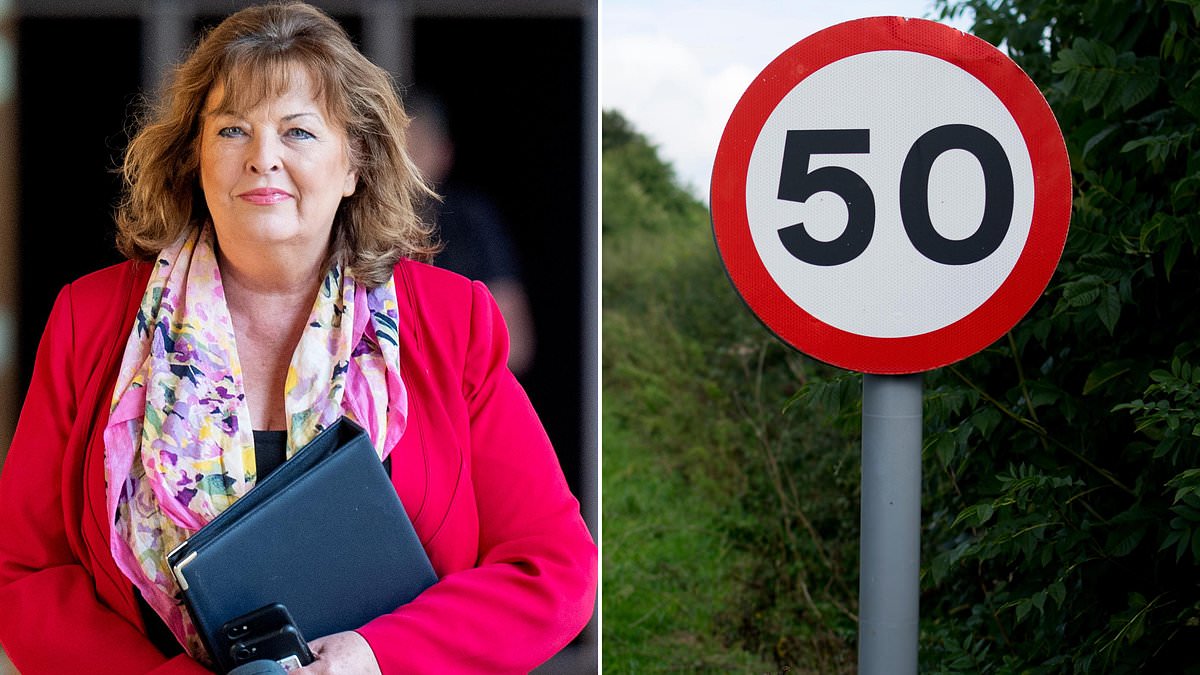The national speed limit is set to be slashed to 50 miles per hour on all of Scotland’s single carriageway roads under ‘nanny state’ proposals by SNP ministers.
Motorists will be forced to cut their maximum speed by ten miles per hour as part of the biggest overhaul of driving laws in years.
The move will result in significant differences in speeding laws on either side of the Border.
Ministers claim it will save 170 lives over the next 60 years and prevent 720 serious accidents.
Critics have blasted the ‘ludicrous’ proposals and said the Nationalists’ failure to fully dual key roads such as the A9, between Perth and Inverness, the A96, which links Aberdeen and Inverness, and the A75 between Stranraer and Gretna, has compromised road safety.
North East Scotland Conservative MSP Douglas Lumsden said: ‘This is a ludicrous measure which seeks to demonise motorists in rural areas who rely on using a car.
‘Unlike the Central Belt, the North and North East don’t have the luxury of motorways connecting locations across the region.
‘The SNP government should be prioritising the upgrade of our single carriageway roads, like the A96 and A90 north of Ellon, instead of implementing ridiculous schemes like this to cover their failings.’
The measure was set out in a ‘national speed management review’ consultation published by Transport Scotland yesterday. It claimed the move could ‘significantly reduce’ the number of accidents which cause injuries.
The document said that, after the first year, there could be four fewer fatal accidents, while the number of serious injury collisions could reduce by 14 and slight injury accidents by six.
Over a 60-year period, it said fatalities would decline by 170, serious injuries by 720 and slight injuries by 378.
It ruled out cutting the speed on motorways and dual carriageways because ‘they are regarded as Scotland’s safest roads and reducing speeds could significantly impact journey times’.
Ian Taylor of the Alliance of British Drivers said: ‘There is very little evidence that perpetually lowering speed limits has a beneficial effect on accidents.
‘Speed is the primary cause of a minority of accidents, and less than people not being able to judge properly, drink and drug driving and inattention.
‘The people asking for this are trying to take us back to the fuel crisis of the 1970s, when there was a temporary 50mph speed limit. It is extremely nanny state and it is asking to be disobeyed.’
As well as reducing the national speed limit on single carriageway roads from 60mph to 50mph for general traffic, the consultation proposes increasing the limit for lorries and HGVs over 7.5 tons
by 10mph to 50mph on single carriageway roads and to 60mph on dual carriageways.
Steve Gooding, director of the RAC Foundation, said ministers should bear in mind the public reaction to the Welsh government’s introduction of a default 20mph limit.
‘It will be important to convince Scottish road users that the changes are necessary and proportionate,’ he said.
‘This change needs to be seen in the context of broader road safety measures, not least those around engineering Scottish roads to be safer – this might include better road surfaces, improved junction layouts and appropriate lighting.’
Scottish Tory transport spokesman Sue Webber said: ‘The SNP are only trying to slow down drivers because they’ve been so slow to deliver vital infrastructure projects across Scotland.’
The consultation was published ahead of ministers giving a statement to parliament today on the A96 corridor review.
The Scottish Greens said that ‘there is no economic or environmental case for dualling every square inch of the A96 and the SNP must accept this and halt the project’.
Transport Secretary Fiona Hyslop said: ‘Evidence from the national speed management review indicates that revising speed limits could lead to a significant reduction in the number of injury collisions on our roads while maintaining journey times and enhancing journey time reliability.’
